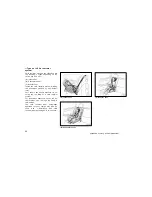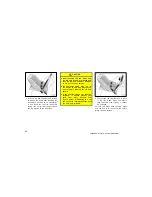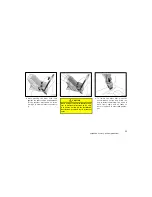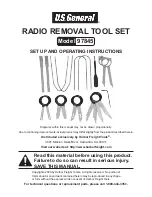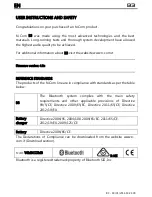
44
Deployment of the airbags happens in a
fraction of a second, so the airbags must
inflate with considerable force. While the
system is designed to reduce serious inju-
ries, primarily to the head and chest, it
may also cause other, less severe injuries
to the face, chest, arms and hands. These
are usually in the nature of minor burns
or abrasions and swelling, but the force of
a deploying airbag can cause more seri-
ous injuries, especially if an occupant’s
hands, arms, chest or head are in close
proximity to the airbag module at the time
of deployment. This is why it is important
for the occupant to: avoid placing any
object or part of the body between the
occupant and the airbag module; sit
straight and well back into the seat; wear
the available seat belt properly; and sit as
far as possible from the airbag module,
while still maintaining control of the ve-
hicle.
Parts of the airbag module (steering wheel
hub, airbag cover and inflator) may be hot
for several minutes after deployment, so
do not touch! The airbags inflate only
once. The windshield may be damaged by
absorbing some of the force of the inflat-
ing airbag.
CAUTION
The SRS airbag system is designed
only as a supplement to the prima-
ry protection of the driver side and
front passenger side seat belt sys-
tems. The front seat occupants can
be killed or seriously injured by the
inflating airbags if they do not wear
the available seat belts properly.
During sudden braking just before
a collision, an unrestrained driver
or front passenger can move for-
ward into direct contact with or
close proximity to the airbag which
may then deploy during the colli-
sion. To ensure maximum protection
in an accident, the driver and all
passengers in the vehicle must
wear their seat belts properly. Wear-
ing a seat belt properly during an
accident reduces the chances of
death or serious injury or being
thrown out of the vehicle. For
instructions and precautions con-
cerning the seat belt system, see
“Seat belts” in this section.
Improperly seated and/or restrained
infants and children can be killed
or seriously injured by the deploy-
ing front airbags. An infant or child
who is too small to use a seat belt
should be properly secured using a
child restraint system. Toyota
strongly recommends that all in-
fants and children be placed in the
rear seat of the vehicle and proper-
ly restrained. The rear seat is the
safest for infants and children. For
instructions concerning the installa-
tion of a child restraint system, see
“Child restraint” in this section.
2003 ECHO from Aug. ’02 Prod. (OM52481U)
Summary of Contents for 2003 ECHO
Page 74: ...74 2003 ECHO from Aug 02 Prod OM52481U ...
Page 122: ...122 2003 ECHO from Aug 02 Prod OM52481U ...
Page 130: ...130 2003 ECHO from Aug 02 Prod OM52481U ...
Page 150: ...150 2003 ECHO from Aug 02 Prod OM52481U ...
Page 151: ...Owner s Warranty Information ...
Page 181: ...Notes 30 ...
Page 182: ...Notes 31 ...
Page 183: ...Notes 32 ...
Page 184: ......
Page 215: ...180 2003 ECHO from Aug 02 Prod OM52481U ...
Page 235: ...200 2003 ECHO from Aug 02 Prod OM52481U ...
Page 249: ...214 2003 ECHO from Aug 02 Prod OM52481U ...
Page 267: ...232 2003 ECHO from Aug 02 Prod OM52481U ...



























